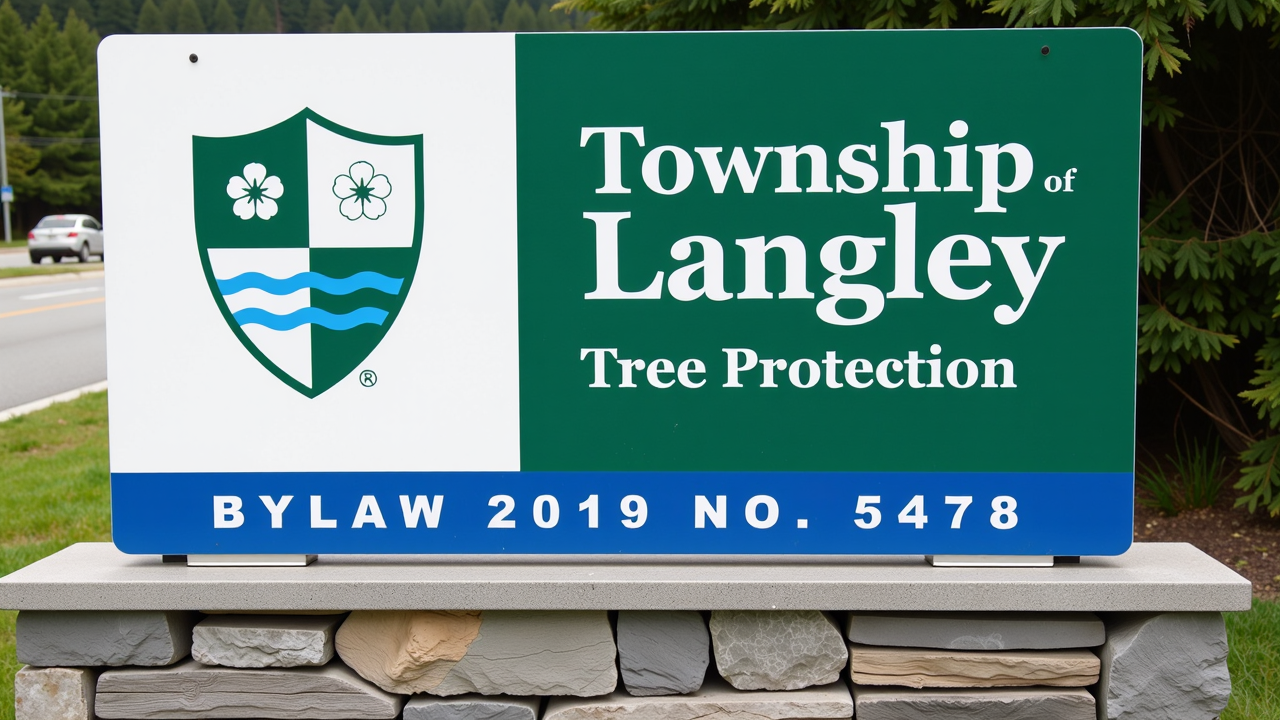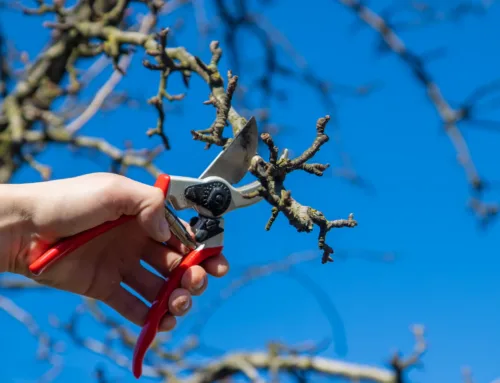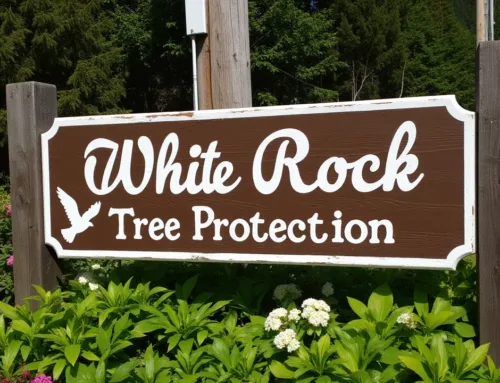Township of Langley Tree Bylaws: A Quick Guide

This article is based on Langley Tree Protection Bylaw 2019 No. 5478 and includes the latest amendments. For the most up-to-date information, consult the City’s official resources or reach out to local authorities.
Understanding Tree Bylaws
Trees are an essential part of the Township of Langley’s natural beauty. They provide shade, improve air quality, and contribute to the overall character of our neighborhoods. However, did you know that cutting down or altering trees on your property in the Township of Langley may require official approval? The township has implemented a Tree Protection Bylaw to safeguard its green spaces and protect mature trees from unnecessary removal. In this article, we’ll explore what this bylaw is, why it’s important for our community, and how it compares to similar regulations in other towns. In this article, we will run through the basics of Tree law in the Township of Langley and answer some questions you may have about tree protection in general. Please note this is only a guide so please check with the Township of Langley for the latest information on Tree Protection Bylaw.
Quick Facts: Langley Tree Protection
- Protected Trees Need a Permit for Removal: Any tree on your property with a diameter at breast height (dbh) of 20 cm or more is considered a protected tree. Before you cut down, remove, or alter such a tree, you must apply for a permit from the Township of Langley.
- Exemptions for Dead or Hazardous Trees: If a tree is dead, dying, or poses a safety hazard, you can remove it without penalty. However, proper documentation, such as an arborist’s report or photographic evidence, must be submitted to the municipality for approval.
- Cash-in-Lieu Option for Replacement Trees: If you remove a protected tree, you are usually required to plant a replacement. Alternatively, you can opt to pay a cash-in-lieu fee, which will be used by the municipality to plant trees on public land.
- Fines for Non-Compliance: Cutting down or damaging a protected tree without a permit can lead to fines of up to $10,000 per tree. Each day of continued violation is considered a separate offense, potentially increasing penalties.
- Tree Protection During Construction: If you’re planning any construction or landscaping work, you must install tree protection barriers around the critical root zones of protected trees. Failing to protect these trees during construction can result in fines and other penalties.
Langley Tree Protection Bylaw 2019 No. 5478
1. What is a Protected Tree?
Homeowners need to know what qualifies as a “protected tree” under this bylaw. A protected tree is:
- Any tree with a diameter at breast height (dbh) of 20 cm or more.
- Trees that serve as wildlife habitats, including nests for raptors, osprey, or heron colonies.
- Trees planted as replacements in previous permits or any tree on municipal land.
This means that not all trees on your property can be freely cut or altered.
2. When Do You Need a Permit?
A permit is required before cutting down, removing, or significantly altering a protected tree. Homeowners cannot simply remove a tree on their property if it is protected by the bylaw.
However, there are exemptions, such as:
- Trees on Agricultural Land Reserve (ALR) properties used for active farming.
- Dead or hazardous trees, as long as proper documentation (like an arborist’s report) is submitted to the municipality.
3. Applying for a Permit
The process involves submitting:
- A tree cutting plan.
- Documentation, including arborist reports and photographs if trees are dead or hazardous.
- A non-refundable application fee.
Once approved, the permit must be visibly displayed on the property during tree removal.
4. Cash-in-Lieu for Replacement Trees
If a tree is removed for a valid reason, homeowners are typically required to plant a replacement. However, under certain conditions, homeowners can pay a cash-in-lieu fee instead of planting a new tree. This money is used by the municipality to plant trees on public land.
5. Fines and Penalties for Non-Compliance
Homeowners need to understand the penalties for violating the bylaw. Fines for cutting or damaging a protected tree without a permit can reach up to $10,000 per tree. Each day that non-compliance continues may count as a separate offense, compounding the penalties.
6. Tree Protection During Construction
If homeowners are planning renovations or construction, special care must be taken to avoid damaging protected trees. The bylaw specifies how to protect trees during such activities, including the installation of protective barriers around the critical root zone.
7. Inspection and Enforcement
The municipality has the authority to inspect properties to ensure compliance with the bylaw. Homeowners must allow inspectors onto their property to check for adherence to tree protection rules. Violations may result in stop-work orders, fines, or mandatory corrective actions.
What is a Tree Protection Bylaw?
A Tree Protection Bylaw is a set of local regulations that govern the cutting, removal, and preservation of trees on both public and private land. These bylaws are designed to protect trees from being unnecessarily felled, particularly in urban areas where development and construction can pose significant risks to existing tree coverage.
The bylaws typically define which trees are protected, how homeowners or developers must go about obtaining permission to remove trees, and what penalties apply if the rules are violated. Protected trees usually include those that reach a certain size, provide wildlife habitats, or are located in areas designated for tree preservation, such as parks or streetscapes.
For example, in the Township of Langley, the Tree Protection Bylaw 2019 No. 5478 ensures that trees with a diameter at breast height (dbh) of 20 cm or more cannot be removed without a permit. This means that even on private property, owners must follow regulations when it comes to large or significant trees.
Why Does Tree Protection Matter?
Tree protection bylaws serve several important purposes, both for the environment and for the community. One of the primary goals is to preserve the tree canopy, which plays a crucial role in reducing urban heat, controlling erosion, and providing habitats for wildlife. By enforcing tree protection bylaws, municipalities ensure that their communities retain healthy tree coverage over time, which contributes to better air quality and greater resilience to climate change.
In addition to environmental benefits, trees can enhance property values. Mature trees are often considered valuable assets to homes. Properties surrounded by trees typically sell for higher prices compared to those in more barren environments. Bylaws that protect trees help maintain the aesthetic appeal of neighborhoods, which benefits all homeowners by preserving their property’s value and the beauty of the community.
Trees also play an important role in supporting biodiversity. They provide habitats for various bird species, insects, and other wildlife. Many bylaws prioritize the protection of trees that are home to endangered or sensitive species, such as raptors, heron colonies, or hummingbirds, ensuring these ecosystems remain intact.
Furthermore, mitigating climate change is another key benefit. Trees act as natural carbon sinks, absorbing carbon dioxide from the atmosphere. By preserving mature trees, municipalities contribute to the reduction of atmospheric carbon dioxide, helping to combat climate change at the local level. Without these protections, communities could face rapid deforestation, a decline in biodiversity, and a decrease in the overall quality of life for residents.
How Do Bylaws Vary?
While the basic intent of tree protection bylaws is the same—protecting valuable trees—the specific rules can vary significantly from town to town. Here are some of the ways these bylaws can differ:
While the basic intent of tree protection bylaws is the same—protecting valuable trees—the specific rules can vary significantly from town to town. One key difference lies in the size and type of protected trees. In some towns, only certain species or particularly large trees are protected. For instance, a bylaw might only apply to trees with a diameter at breast height (dbh) of 30 cm or more, while other municipalities protect smaller trees as well. Some bylaws also provide specific protections for native or endangered species, ensuring that sensitive ecological areas are preserved.
The permit requirements for tree removal or alteration also vary. Some municipalities require detailed documentation, such as an arborist report, while others may have a more straightforward application process. For example, the Township of Langley requires a detailed tree cutting plan and photographic evidence for certain tree removal requests, while other towns may not have such stringent documentation requirements.
Another variation involves cash-in-lieu programs. In certain areas, homeowners who remove a protected tree may be required to either plant a replacement or pay into a cash-in-lieu program. This program allows the local government to plant trees on public land in lieu of homeowners replanting on their own property. However, not all municipalities offer this option, and the associated fees can differ depending on the town’s policies.
Finally, exemptions from tree protection bylaws can differ. Some towns may exempt agricultural lands from tree protection regulations, allowing farmers to remove trees as necessary for their operations. Other municipalities may permit homeowners to remove trees without a permit if the trees are dead, dying, or pose an immediate safety hazard. The specifics of these exemptions vary widely, depending on local needs and priorities.
Conclusion: Protecting Your Trees and Your Community
Tree protection bylaws are an essential tool for safeguarding the trees that make our communities beautiful and livable. As a homeowner, it’s important to understand the specific tree protection regulations in your town. Failing to comply with these rules can lead to fines and other penalties, but more importantly, it can result in the loss of valuable natural resources that benefit everyone.
If you’re planning any major landscaping or construction on your property, make sure to check with your local municipality to see if you need a permit to remove or alter any trees. By working within the guidelines of these bylaws, you can help preserve the green spaces that make our neighborhoods thrive.


